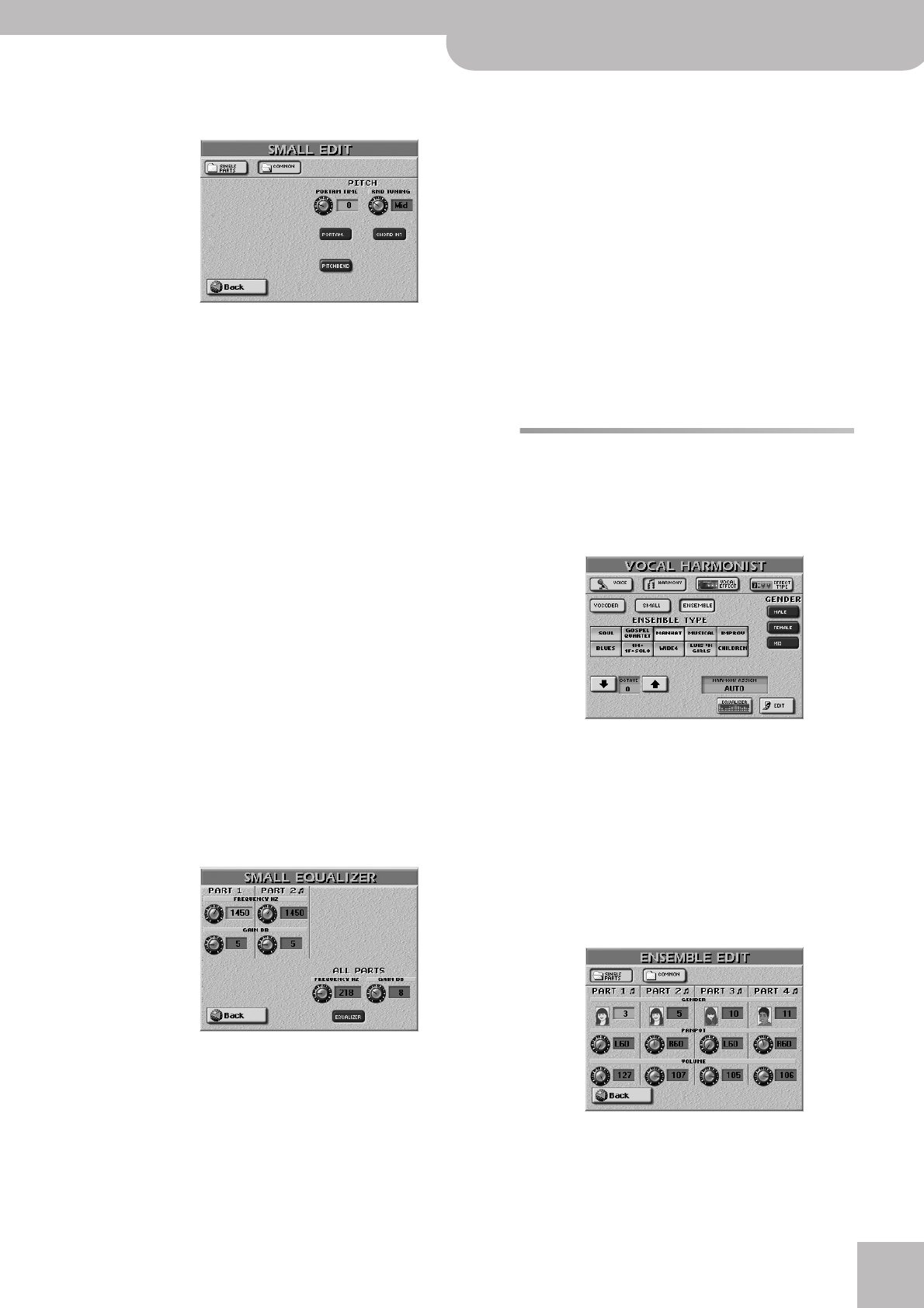
Ensemble settings
E-80 Music Workstation
r
155
Press the
[COMMON]
field to jump to the fol-
lowing page.
• Press the field of the parameter you want to edit and
set the desired value with the [DATA÷ENTRY] dial or
the [DEC]/[INC] buttons.
• Press the [PORTAM] field to switch this effect on.
“Portamento” means that the pitch doesn’t change in
clearly defined steps: it produces glides from one
note to the next.
● PORTAM. TIME—Use this parameter to specify the speed
at which the glides are carried out. The higher the value,
the slower the transitions.
● RND TUNING—This parameter allows you to introduce
subtle (or not-so-subtle) pitch inaccuracies usually asso-
ciated with analog synthesizers. Irrespective of the
choice you make here (“Low”, “Mid”, “High”), the effect
will be noticeable, but never overly dramatic. Select “Off”
if you do not need this effect. This is not the same as a
vibrato effect, because it only affects the onset of the
notes. There is thus no periodic modulation of the pitch.
● CHORD INT—This parameter works like the MELODY INT
function of the Style section: it even produces harmo-
nies when the source (a song or your playing on the key-
board) only plays one note.
● PITCH BEND—Press this field (so that it “lights”) if you
want to influence the pitch of the voice effect using the
E-80’s Pitch Bend lever.
• Press the [Back] field to leave this page.
If you press the
[EQUALIZER]
field…
…the display looks as follows:
This page contains a simple equalizer for the SMALL
parts and an EQ band that applies to both voices
simultaneously.
• Press the field of the parameter you want to edit and
set the desired value with the [DATA÷ENTRY] dial or
the [DEC]/[INC] buttons.
● EQUALIZER—Press this field to switch all equalizers on
this page on or off. The equalizer can be used for two
things: (a) emphasizing a specific frequency range to
create a special effect or make the part more distin-
guishable; (b) to reduce the level of frequencies that
mask other sounds or produce a “boomy” sound.
● FREQUENCY Hz—Use this parameter to select the fre-
quency whose level you wish to change with the GAIN
parameter. The smaller the value, the lower the fre-
quency that will be boosted or cut. The ALL PARTS FRE-
QUENCY HZ parameter affects the sound of both parts.
● GAIN—This parameter sets the level of the selected fre-
quency. “0” means that the frequency’s level does not
change (no difference between equalizer on and off). The
ALL PARTS GAIN dB parameter affects the sound of both
parts.
• Press the [Back] field to leave this page.
Ensemble settings
When the [ENSEMBLE] indicator lights, four-part har-
monies are added to your singing. The associated page
allows you to specify what kinds of voices will be used
for these harmonies.
Press and hold the [ENSEMBLE] button.
With the exception of the fact that up to four voices
are generated, the parameters and fields on this page
work exactly like the “Small” functions, so please see
above.
Note: When the ENSEMBLE part is used together with VOICE-
FX or AUTO PITCH, only three harmony voices are available.
Note: The [VOCAL¥EFFECT] and [EQUALIZER] fields allow you
to jump to the effect or tone controls.
If you press the
[EDIT]
field…
(Press the [SINGLE¥PARTS] field to select this page.)
See page 154.
